True or false: Does gravitational lensing reveal dark matter’s nature?

- When we examine the Universe in detail, many lines of evidence point to the existence of cold dark matter: in galaxies, clusters of galaxies, and on even larger cosmic scales.
- Part of the evidence for dark matter includes gravitational lensing observations: where a foreground source of mass bends the light traveling from more distant, background objects.
- A bold, recent paper claims to have detected evidence pointing toward dark matter’s nature: away from WIMPs and toward ultra-light particles. But is that claim correct?
When it comes to the question of “What is the Universe made of?” modern science has revealed the answers like never before. The material that makes up the planets, stars, gas, and dust in our Universe is all normal matter: stuff made of protons, neutrons, and electrons. Protons and neutrons are further composed of quarks and gluons, and electrons are one of six species of leptons in the Universe. Along with the force-carrying particles, the bosons, these elementary particles represent a total of about 5% of the total energy in the Universe.
But the other 95%, while we know how to categorize it — 27% dark matter and 68% dark energy — remains elusive as far as its true nature goes. While astrophysics has revealed many of their properties, with dark energy behaving as a species of energy uniformly inherent to space itself and dark matter behaving as though it was made of slow-moving, cold, collision-free massive particles, we still have yet to directly uncover their true nature.
In a wild new study, a team claims to have found a new piece of astrophysical evidence that doesn’t just support cold dark matter, but favors one type of ultra-light, wave-like dark matter, while disfavoring the more massive, heavy types of WIMP dark matter. It’s a bold claim for sure, but many are far from convinced. Here’s why.
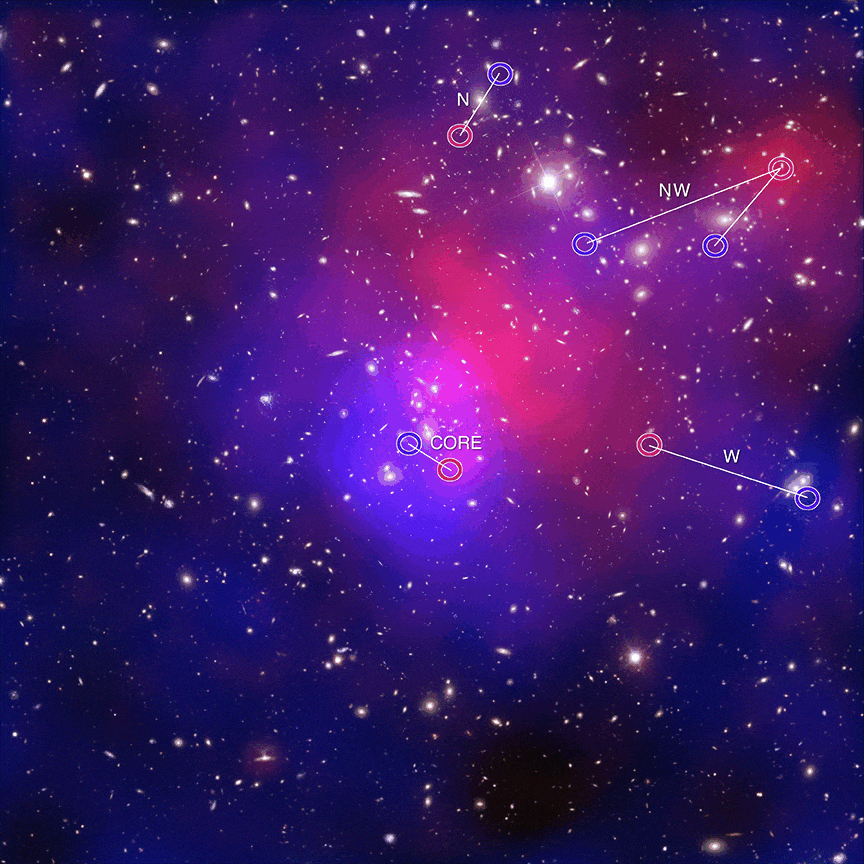
The simplest model you can make of dark matter is that it’s composed of just one species of particle: with all dark matter particles having the same mass as one another. These particles wouldn’t bind together with one another to make composite structures, nor would they collide or exchange momentum with one another, nor would they collide or exchange momentum with any of the normal matter particles. All they would do is gravitate, and move according to however the curvature of spacetime affected their motions.
Over time, they would drive the formation of structure in the Universe, forming spheroidal haloes of dark matter while the normal matter — which does collide, stick together, and form bound, composite structures — sinks to the centers of those haloes, where they form the familiar stellar and galactic structures, including spiral and elliptical galaxies.
But the dark matter remains diffuse, in a roughly spheroidal distribution extending some ~10+ times as far away as the extent of the normal matter. Whereas a Milky Way-like galaxy might be a little more than 100,000 light-years, end-to-end, as far as its normal matter is concerned, the dark matter halo that enshrouds us extends for more than one million light-years in all directions.

On even larger cosmic scales, massive dark matter haloes should surround groups and clusters of galaxies. While each individual galaxy should possess its own massive dark matter halo, there should also be a large-scale distribution of dark matter that’s completely independent of any individual, smaller-scale clump. These dark matter haloes, if you were to examine them very coarsely, would appear smooth and spheroidal: densest at the centers and decreasing in density out toward the outskirts.
But within that smooth structure would appear a much more complex substructure. Each individual galaxy within a galaxy cluster has its own dark matter halo. Moreover, embedded within each galactic halo, as well as within the overall cluster halo, are even smaller clumps of dark matter: dark matter substructure. Thousands or even millions of these smaller mini-haloes can exist all throughout these larger structures, and their presence can be (and has been) revealed by reconstructing the mass distribution of these clusters through gravitational lensing.
The distortion of the light coming from “background” galaxies — galaxies farther away than the lensing galaxy clusters but along the same line-of-sight — enables astrophysicists to reconstruct the mass profile, and mass distribution, of the overall matter within the cluster itself.
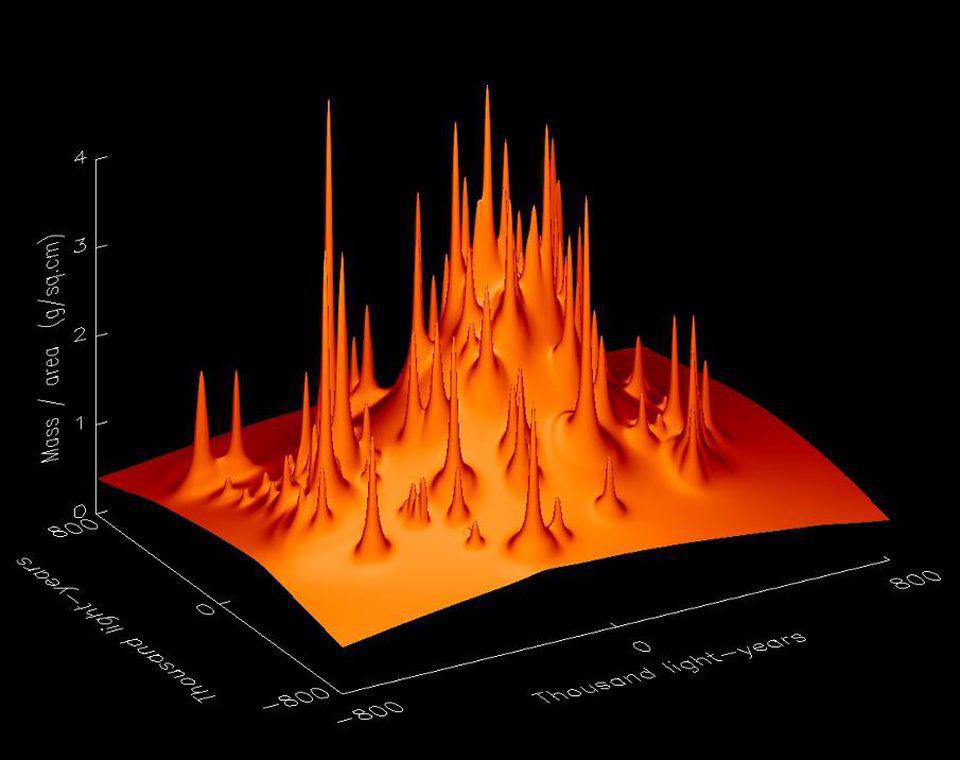
There are two types of gravitational lensing we need to concern ourselves with as we undertake this ambitious endeavor.
Strong gravitational lensing: this is the effect that produces rings, arcs, and multiple images of the same background object. When the shape of the (foreground) lens is perfectly or almost-perfectly aligned with a background object, the light from that background object will be stretched, bent, distorted, and magnified by the foreground masses. This creates the most visually spectacular and greatest-magnification images of background objects of all, but only takes place when a comparatively rare alignment is present.
Weak gravitational lensing: this effect is much more subtle but also much more common. The presence of foreground masses distorts the shapes, positions, and apparent orientations of background galaxies to get stretched along the “circumference” of circles surrounding the masses but compressed along the “radial” direction of those circles. Weak gravitational lensing requires large numbers of objects to quantify and is a statistical effect, but a very powerful one in revealing dark matter.
To date, both of these effects have been studied across a wide variety of systems, and have indeed revealed the suspected “dark matter substructure” within haloes of galaxies and clusters of galaxies.
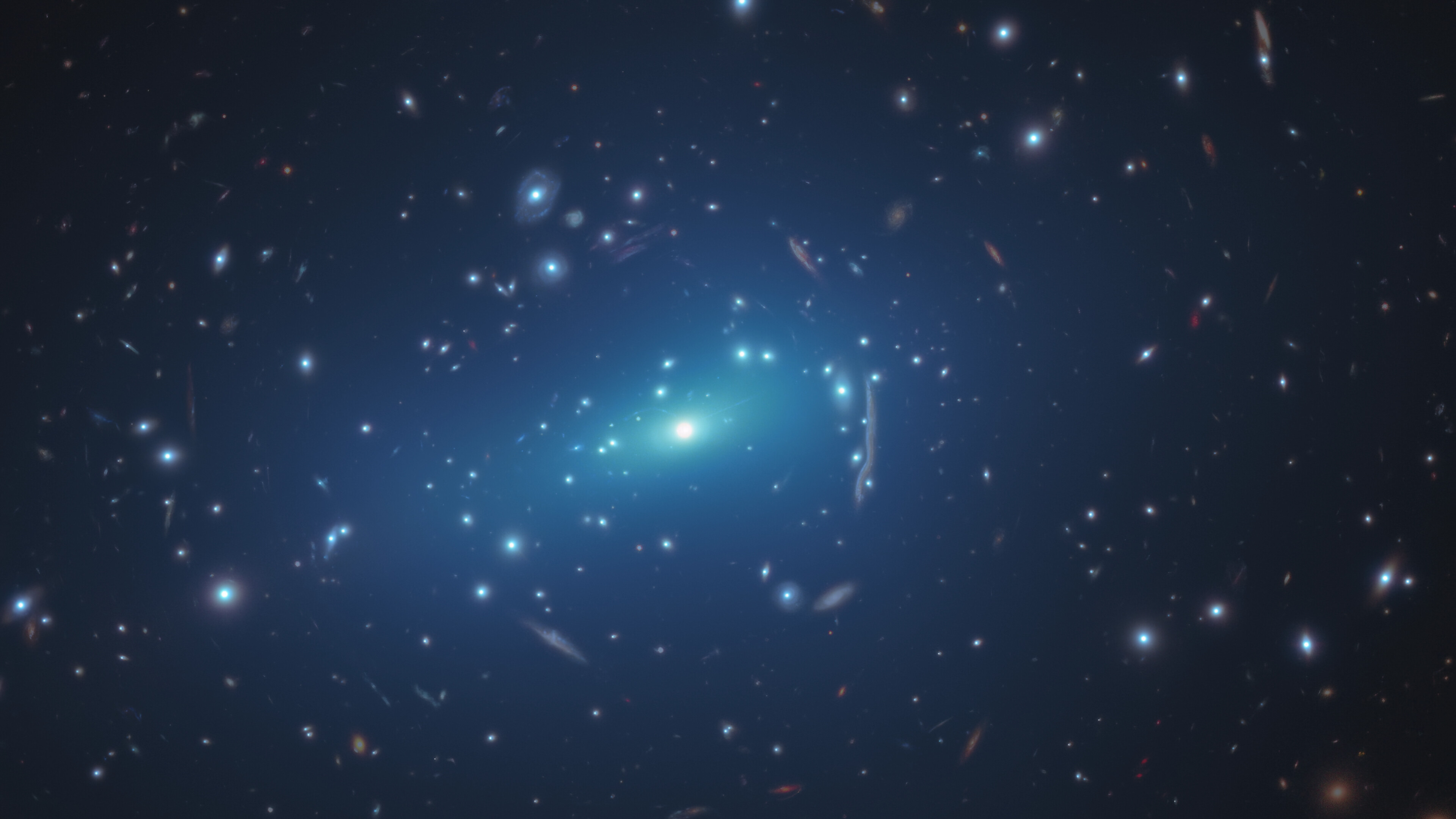
But all of this falls under the umbrella of a very specific assumption: that dark matter behaves as a particle. This is both true and reasonable for all of the known particles in the Universe, but it might not be true for dark matter.
You might remember this concept from quantum mechanics: wave/particle duality. It states that whenever you have an energetic-enough interaction of two quanta with one another, they behave like particles, scattering off of one another with well-defined positions and momenta, up to the limits of the inherent quantum uncertainty that they possess. But when individual quanta don’t interact, they behave like waves: spreading out over space.
All particles and systems of particles have a “wavelength” they can be assigned. For massless particles, like photons, that wavelength is determined by their energy. But for massive particles, that wavelength is determined by the particle’s momentum, which is related to the particle’s rest mass. The more massive the particle, the smaller its de Broglie wavelength, but for very low-mass particles — particles less massive than any of the ones known in the Standard Model — their wavelengths can be very large indeed.
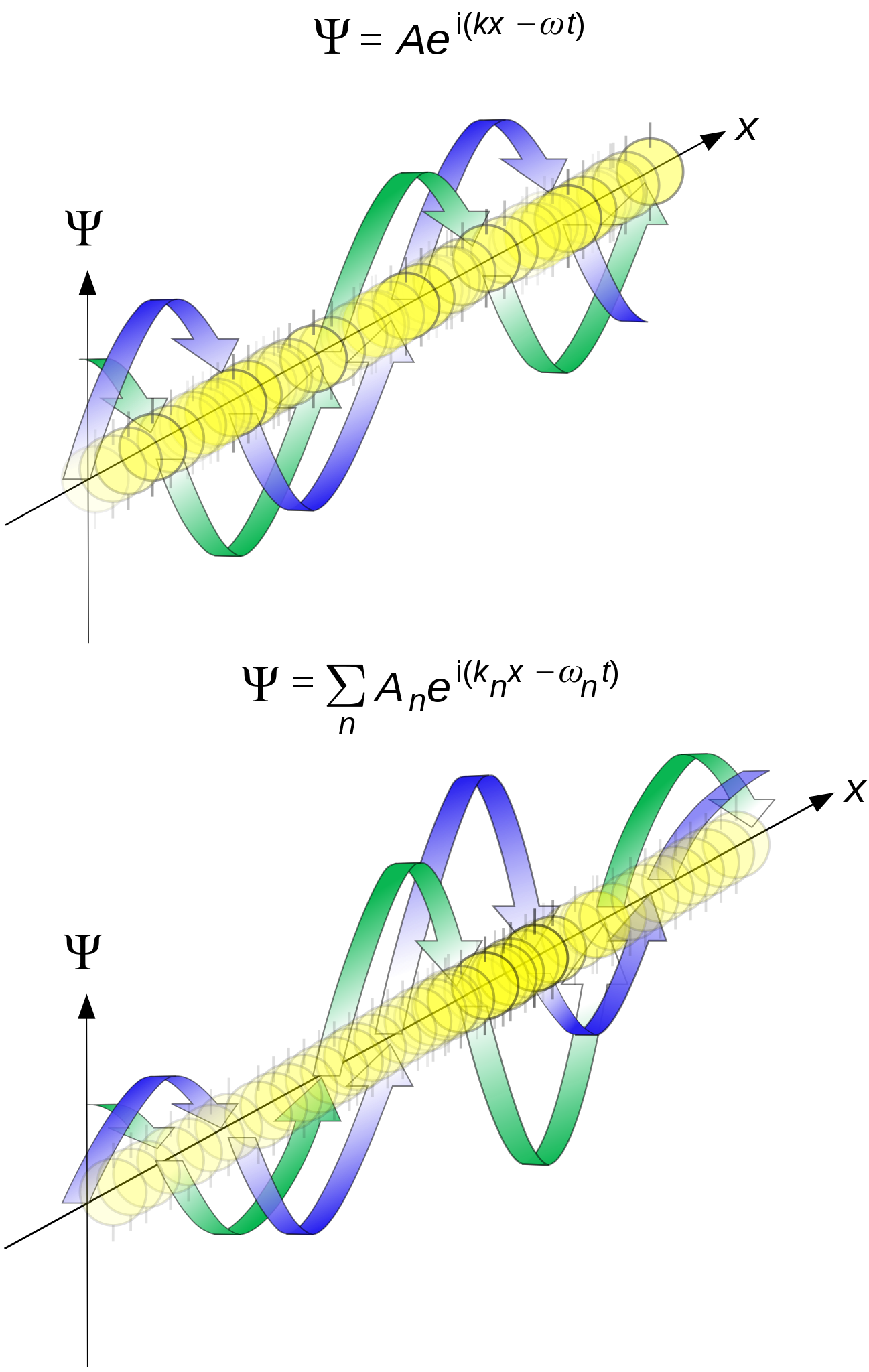
For a particle moving through space at a speed of about 1 km/s, its de Broglie wavelength is highly dependent on its mass. For something the mass of a proton, its wavelength would be something like 10-10 meters: about the size of an atom. For something around the mass of an electron, its wavelength is around 1 micron: the size of a typical bacteria. For something much lower in mass, like the mass of a neutrino, its wavelength might be upward of 100 meters or even several kilometers.
But for dark matter, the mass is totally unconstrained. It could be anywhere within the range of the known particles, or far outside of it.
- WIMPzillas, for instance, are a class of ultra-heavy dark matter particles, and with masses up to a quadrillion times as heavy as a proton, could have a de Broglie wavelength smaller than even what the LHC can probe.
- WIMPs, in theory, have wavelengths 100-1000 times smaller than a proton’s, and you don’t lose anything by treating them purely like particles on cosmic scales.
- But on the extreme ultra-light end, it might be possible to have enormous numbers of extremely low-mass dark matter particles: with masses as little as 10-30 times that of the already-light neutrino.
With tiny enough masses, dark matter particles might even exhibit wave-like behavior on galactic or even galaxy cluster scales.
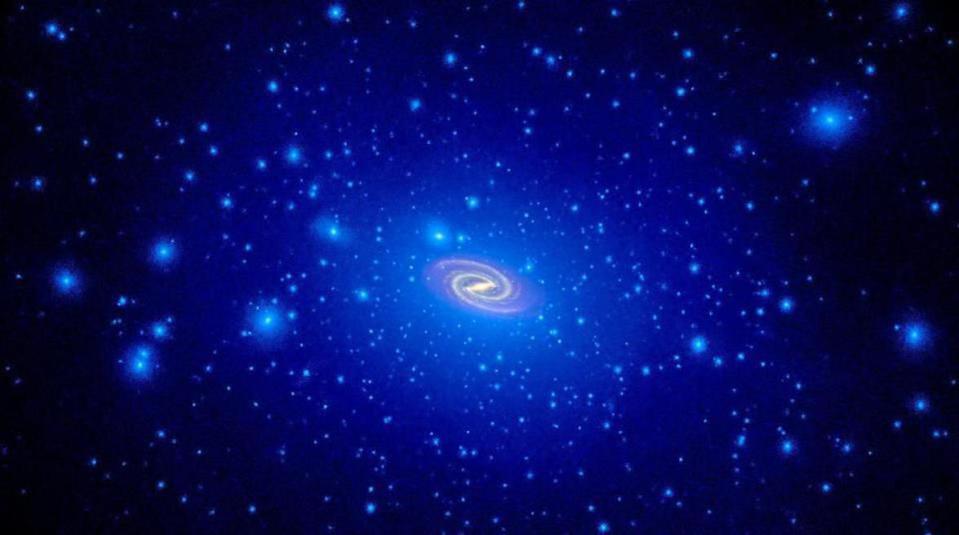
My big fear about this scenario, as a theoretical physicist, would be the following.
- Scientists propose ultra-light, wave-like dark matter as a possibility.
- They do the 3D modeling to determine under what conditions a gravitational lensing signal would reveal wave-like properties.
- Additional theorists hop on the bandwagon and cook up candidate particles that would have the relevant masses.
- And then someone on the observational side finds something of low quality — like one poorly resolved strong lensing observation of one object — that looks like one of these models, and says, “Hey, look! We’ve revealed dark matter’s nature, and shown that it’s wave-like, supporting one particular exotic scenario and disfavoring other, non-wave-like dark matter scenarios.”
Steps 1 and 2 happened in 2014; step 3 happened gradually over the next few years, with a spectacular review of the status of wave dark matter published in 2021; and then step 4 happened, predictably and quite unfortunately, on April 20, 2023. A team of scientists — including the original theorists who first proposed wave-like dark matter as well as a team of observers — looked at one strong lensing system, HS 0810+2554, and concluded that dark matter is wave-like and not any of those heavier, non-wavy types.
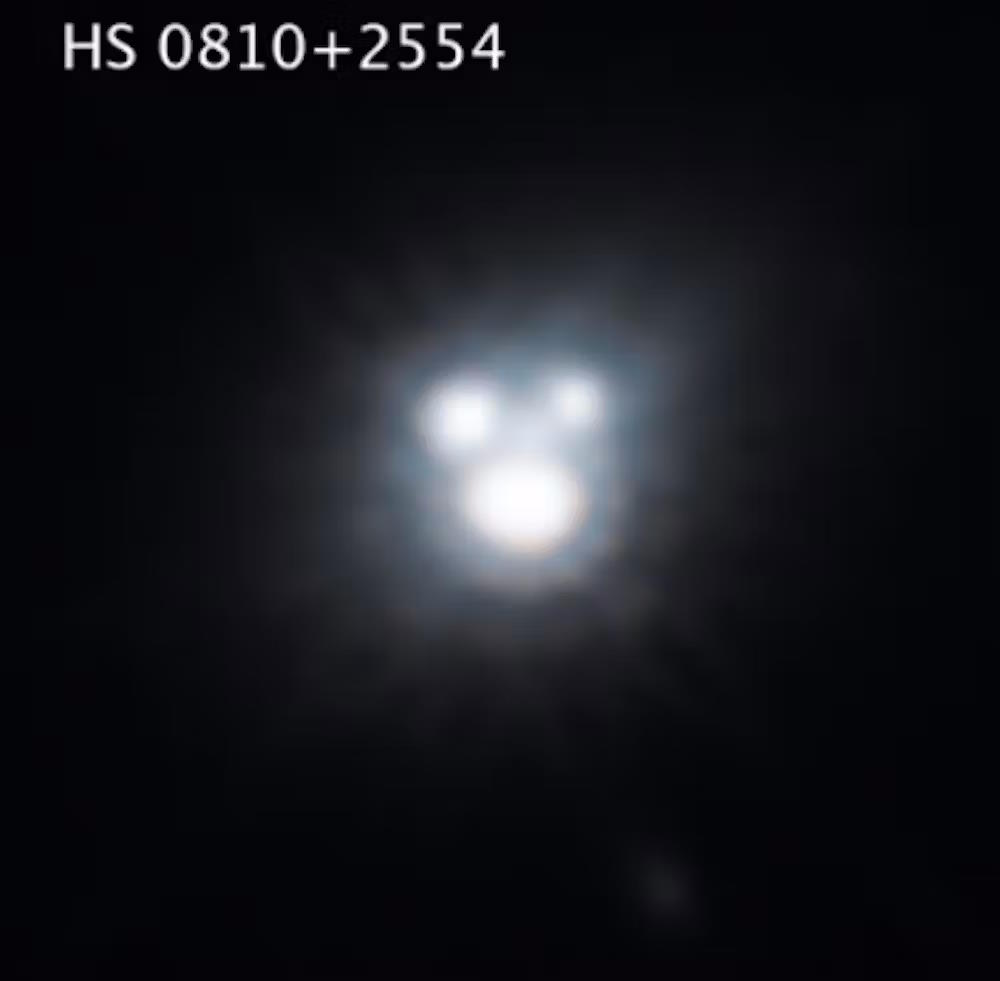
Part of this is true: if dark matter really is made of extremely low-mass particles, the gravitational lensing signals that we see should reveal these wave-like behaviors. This is something we should be able to test observationally, but there’s a catch: modeling the small-scale behavior and distribution of dark matter is an incredible challenge.
Normally, there are many different lensing models that are compatible with the data for any particular observation, and only in the most perfectly aligned systems that exhibit very clear and particularly strong lensing features can this analysis be trusted. This is why, in order to draw a responsible, robust conclusion, you need to demonstrate that the effect you’re seeking isn’t a feature of just one system with low-quality observations, but show that this feature is universal to the types of systems you’re examining.
Furthermore, lensing analyses are only sensitive to the total amount of mass present along a line-of-sight; they cannot tell you what portion of the mass is normal matter and what portion is dark matter. The thing you have to be really, really careful about in any sort of lensing analysis is this: if you’re using a crude model of dark matter’s distribution, one that doesn’t fully account for the interplay of:
- dark matter,
- with normal matter and radiation,
- including stellar feedback, heating, gas evaporation, electromagnetic effects, molecular cooling, and dynamical dark matter heating,
you’re going to draw an unsound scientific conclusion about what you found.

What I really dislike about this latest study is that not only did they only use one strong lensing source to do their analysis, but they used the grossest, most oversimplified model of non-wave-like dark matter possible: the archaic (from the mid-1990s) Navarro-Frenk-White (NFW) profile. It doesn’t include any dark matter/normal matter interactions, no feedback, no gas dynamics, no heating or cooling, etc. It’s basically taking:
- an oversimplified model of dark matter,
- with no substructure or sub-haloes included,
- a fuzzy image of a single strong gravitational lensing source,
- and comparing the fuzzy image with the oversimplified model versus a wave-like dark matter model,
- and concluding that the wave-like model fits better than the oversimplified model,
- and therefore, dark matter is ultra-light and wave-like.
I won’t go as far as to say that the authors are crying wolf, but they are grossly overselling their case when they state, “The ability of ψDM [i.e., wave-like dark matter] to resolve lensing anomalies even in demanding cases such as HS 0810+2554, together with its success in reproducing other astrophysical observations, tilt the balance toward new physics invoking axions.” No, they absolutely do not.
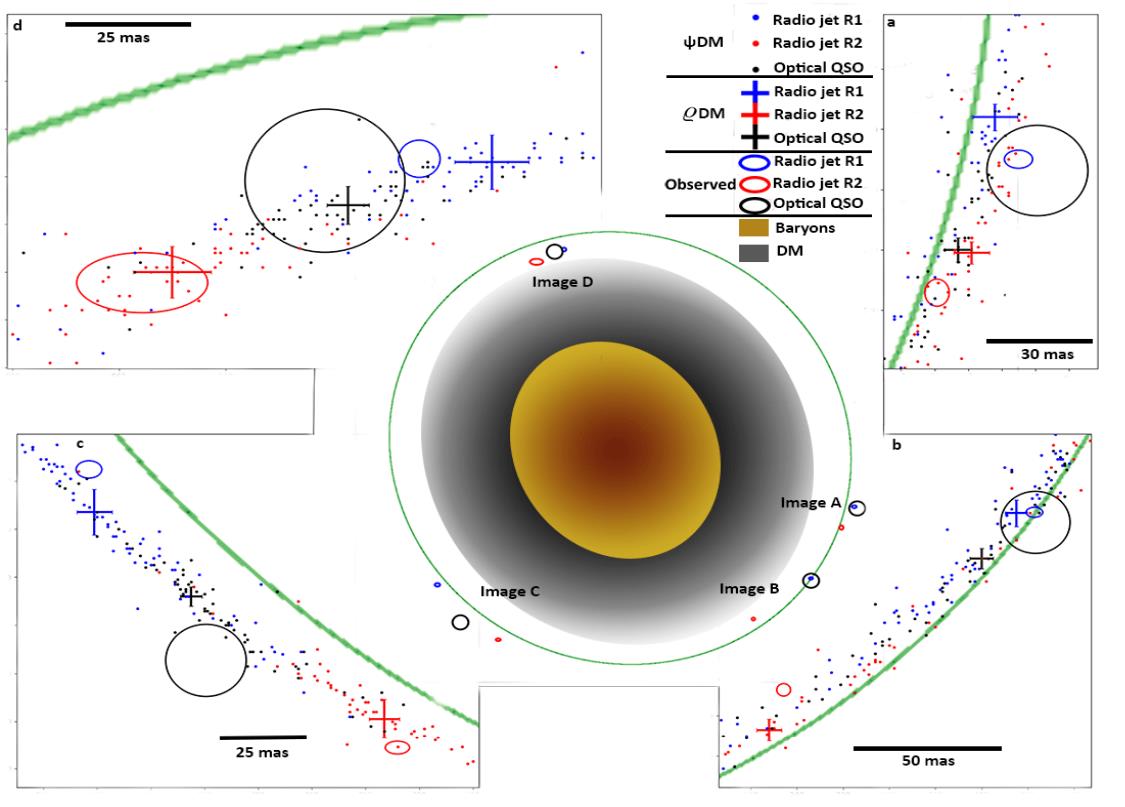
What’s more accurate is to state that we don’t know what dark matter’s true nature is, and that gravitational lensing offers a potential way to discern between some very low-mass candidates that can exhibit wave-like behavior and some heavier, more massive candidates that shouldn’t exhibit wave-like behavior on cosmically interesting scales. The one lensing system studied in this new paper, HS 0810+2554, is at best slightly suggestive that we should take this wave-like dark matter scenario more seriously, but the truth is that the burden of proof to determine dark matter’s nature is enormous.
Getting there will require a robust analysis of thousands of gravitationally lensed systems, showing the insufficiency of non-wave-like dark matter and the success of wave-like dark matter in explaining them. It will require successfully accounting for all of these difficult normal matter/radiation/dark matter interactions, and constructing a robust set of dark matter maps for these objects, further demonstrating their wave-like nature. And it must avoid pathologies commonly associated with ultra-light dark matter models, like overclosing the Universe or creating too much CP-violation to be consistent with particle physics observations.
While it’s easy to be uncritically supportive of a new result with a bold claim such as this, in reality, science proceeds cautiously and skeptically, demanding an extraordinary set of evidence before drawing conclusions. This new study, at best, provides a hint, but may only be a case of squinting at a fuzzy blob and seeing what the authors want to see. To truly prove their point, they’ve got a lot of heavy lifting ahead of them.





